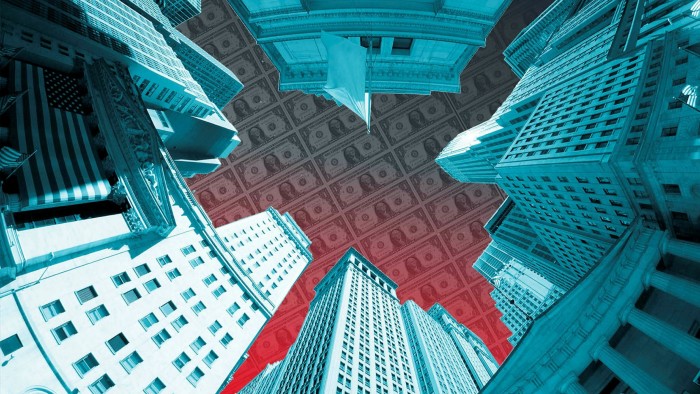Spacs’ fee problem


Roula Khalaf, Editor of the FT, selects her favourite stories in this weekly newsletter.
This article is an on-site version of our Unhedged newsletter. Sign up here to get the newsletter sent straight to your inbox every weekday
Good morning. Stocks reached a split decision yesterday: The large-cap S&P 500 rose a little, while the technology-heavy Nasdaq and small-cap Russell 2000 both fell a bit. The 10-year Treasury yield rose a touch. After the volatility of recent weeks, it would be reassuring to see a trend form; none seems forthcoming. While we wait for one, my first shot at a topic I have wilfully ignored so far: Spacs. Email me: robert.armstrong@ft.com
The case of the 122 per cent Spac fee
Here’s my simplified understanding of how a special purpose acquisition company works:
A company without operating assets raises some money in an initial public offering, at $10 a share. The new shareholders generally also receive warrants, giving them the right to buy more shares in the company, at a later date and at a price somewhat higher than $10. The “sponsors” who set up the Spac also get a bunch of shares — perhaps 20 per cent of the total — in return for just a nominal fee, because they are so wonderfully clever.
The Spac then goes looking for an operating company to buy. If it finds one, it says to the shareholders, what do you think? The shareholders have the right to say “no thanks” and get their $10 back with interest — while keeping the warrants, if they like. The Spac then uses the remainder of the IPO proceeds, possibly supplemented by money from private investors, to invest in the target. Hopefully, under the management of the wonderfully clever sponsors, the value of the target then rises enough that the shares sold in the IPO are worth more than $10, even after they are diluted by the sponsors’ almost free shares and the warrants.
As a way to finance a company, this may or may not make sense. But there are definitely cases when it has not gone smoothly, as the FT reported this week. In the third quarter of this year, according to Dealogic, more than 50 per cent of Spac shareholders asked for a refund (“redemption” is the preferred term) when asked. At one company, it was way worse than that:
“Biopharmaceutical start-up eFFECTOR Therapeutics expected to receive at least $100m in proceeds from its merger with Locust Walk Acquisition, a Spac that raised $175m when it listed in January. However, the cash held in the trust account was almost entirely wiped out when 97 per cent of shareholders chose to redeem, leaving just $5.2m.
While some of the shortfall was covered by a $60m private investment in public equity transaction, eFFECTOR received just $53.5m after fees and expenses.”
Now, this is bad on several levels, and one of them — as Duncan Lamont of Schroders pointed out to me — is fees. One of the theoretically appealing features of a Spac is that the underwriting fee for the initial IPO tends to be a bit lower, at 5.5 per cent, than the 7 per cent investment banks charge in a standard IPO. But in a standard IPO, investors can’t get their money back from the company.
The result of the shareholder’s option, the underwriting fee Locust Walk paid to its IPO underwriters (Cantor Fitzgerald was the lead bank) was greater than the amount of money that the stock market listing ultimately raised. Here are how the numbers worked, according to Lamont. I checked them against the S-1 filings, and they look right (red marks mine):

Even after the underwriters waived half of the deferred underwriting fees (kind of them) they charged a commission of 122 per cent of final proceeds.
This is clearly not the standard case, but you can see how the math would work with the 50 per cent redemptions that were standard this quarter. Furthermore, according to an academic paper published last year, the average effective underwriting fee of the 47 Spacs that completed mergers between June 2019 and June 2020 — before things really got ugly for the industry — was more than 16 per cent.
Why should we care? I mean, buyer beware. But as Lamont points out, we have a real need for new ways to get companies on to public markets. The cost and hassle of being public has risen at the same time as venture capital and private equity funds have grown flush with funds, allowing them to fund private companies almost indefinitely. The number of public companies in the US is down by almost half over the past 25 years, according to World Bank data.
Big public markets are good because corporate equity is the asset class that creates the most wealth, and all investors should have good access to it — not just endowments, big pension funds and the very wealthy, who make up private equity’s core clients. Nor is it good news for investors if the only way to own the equity of a majority of American companies is to pay a private equity fund 2 per cent of assets and 20 per cent of profits, and to own those companies within the highly leveraged capital structure which the PE firm requires in order to achieve respectable returns after taking out those enormous fees.
Spacs, structured correctly, might have helped with this problem. But if their average fees are even higher than the usurious and absurd 7 per cent Wall Street changes for a standard IPO (the first price I think of whenever I hear the phrase “market failure”) then what’s the point?
The Spac trend appears to be in retreat. Good.
One good read
Is it true that expected inflation causes actual inflation? The notion makes some intuitive sense. If I expect the prices I pay to rise, I will increase the prices I charge to protect my income. Workers will demand higher wages, companies will put through an extra price increase just to be safe, and the game is on. But the Fed economist Jeremy Rudd argues that this intuitive story — and the host of economic models based on it — make little theoretical sense and have even less empirical support. I can only follow parts of the paper, but all of it is amusingly written.
Comments